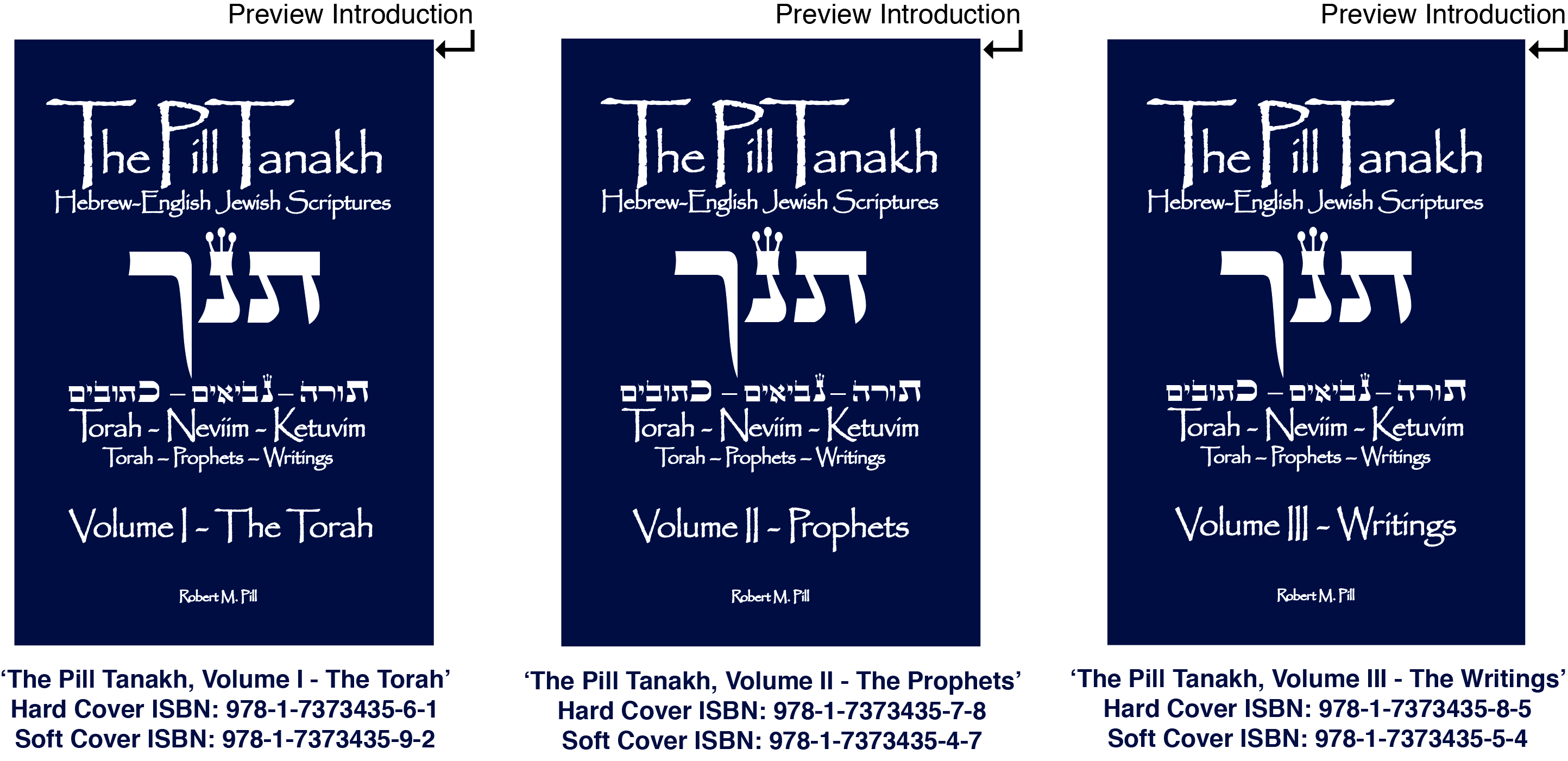| Sun, 06 Jul 2025 21:32:06 -0500 Yom Rishon, Chodesh Rvi'i 10, 6025 — יום ראשון חדש רבעי י ו׳כה |
|
|
|
Just one important example of why there is need for a new Hebrew–English Jewish Scriptures: I changed all '1,110 rabbinic Qere/Ketiv instances' to make what the Masoretic Scribes wrote to be the preferred rendering, relegating 'rabbinic Qere additions' to unobtrusive, small footnotes notations! The Pill Tanakh preserves the Hebrew text just as the Masoretic Scribes intended in the first place! You may wonder why I place such importance of minimizing the "rabbinic additions," which are found written in the margin on a line in the Masoretic Text. You may ask, "just what am I talking about?" You may also express, "I've never heard of the Qere/Ketiv, so, what's the BIG DEAL?" The Leningrad Codex is the oldest complete manuscript of the Hebrew Language Based Jewish Scriptures. Most people know of it as The Masoretic Text! Modern Bibles claim that their source for the Jewish Scriptures is the Masoretic Text (again, which is actually The Leningrad Codex). The Leningrad Codex was completed around the year 1009 of the Common Era. It is hand–written on parchment and each sheet typically has three columns (with certain exceptions; for example, Psalms has two columns primarily). On the actual parchment of the Leningrad Codex, on the margin of a line is a word written in consonants only. It is an unvowelled, unaccented "addition" (actually written at a much later time than the original!). This Qere is a word in which rabbis claim was intended to replace the vowelled and accented word in the midst of that same line, typically having the same consonantal base. The word in the margin is known as Qere, meaning, "What is read." – it is what rabbis insist MUST ALWAYS BE READ!. The word intended to be replaced is within the same original Hand–Written, Masoretic line and is known as Ketiv, meaning, "What is written" — and which the rabbis command MUST NEVER BE UTTERED. The Qere additions are written on the parchment itself! I refer to them as "rabbinic additions" because I believe they were added at a much later time than the original text was written — and, not written by the Masoretic scribes, themselves, but more likely by Talumudic rabbis; otherwise, why do the rabbis insist that these "additions" MUST ALWAYS BE READ, but that which was originally written by the Masoretic scribes, the Ketiv, NEVER? An example can be found by seeing how prominent Jewish Bibles FORCE a reading of the "rabbinic Qere additions." The Stone Edition Tanach places the Qere ("what is read") additions in the place of the Hebrew text where the original Ketiv (what the Masoretes originally wrote), which are placed within brackets following the Qere additions in the same line of the text. In The Koren Tanakh, on the line that the Qere replaces the original Ketiv, the fully voweled and accented Ketiv is placed in the outside margin and the unvowelled, unaccented Qere is placed naturally in what was previously the position of the Ketiv. In both cases, the original writing of the Masoretes is obfuscated and relegated to an unnatural rendering and the rabbinic Qere additions are within the natural flow of the Hebrew text, forcing the reader to disregard the original Ketiv, and honor the later rabbinic Qere additions instead! Unfortunately, this forced obfuscation of the written text may have influenced CHRISTIAN BIBLES as well!
"In a number of the texts containing K
לא and Q
לוֹ (Ex 21:8; 1 Sam 2:3; 2 Kings 8:10; Is 63:9; Ps 100:3), the Ketiv is as acceptable as is the Qere,
yet nearly all of the English Bibles surveyed opt for the Qere. This might indicate that the translators are
predisposed to give priority to the Qere unless some other factor makes it clearly unusable."
(Tim Hegg, "To Read or Not to Read?: Translating the Qere/Kativ," TorahResource Institute, accessed 25 May 2022, https://tr-pdf.s3-us-west-2.amazonaws.com/articles/to-read-or-not-to-read-qere-ketiv.pdf; Note that in the above quote, Hegg has the Hebrew for the Ketiv and the Qere reversed. I have not corrected it herein, but as in Exodus 21, it is quite clear that the Ketiv is accented and vowelled. Moreover, it should be known that the Ketiv (what is written) is always from the original, hand–written, vowelled and accented Hebrew of the Masoretic Text; while the Qere (what is read) is always unvowelled and unaccented, containing consonants only! — Robert Pill). Thus, in The Pill Tanakh, the rendering of what the Masoretes originally wrote is preserved! The unnatural rabbinic additions (Qere) are minimized, placed within a small footnote notation! Again, you may find it of interest that the rabbis demand that their Qere additions are always read, but they insist that the Masoretic original, Ketiv, should NEVER BE UTTERED! "The rabbis" have intentionally obfuscated the original Hebrew Text in Jewish Bibles! First published in September, 2022, The Pill Tanakh, Hebrew-English Jewish Scriptures (in three volumes): Volume 1 - The Torah (520 pages, soft-cover retail $28.99; hard-cover $36.00 [a double Chai!]), Volume 2 - The Prophets (970 pages, soft-cover retail $41.99, hard-cover $49.00) and Volume 3 - The Writings (688 pages, soft-cover retail $32.99, hard-cover $40.00). (Be aware that some stores may not honor pricing models, including Walmart!). Available at over 39,000 Online stores, including Amazon, Barnes And Noble, Books A Million, and Walmart |
